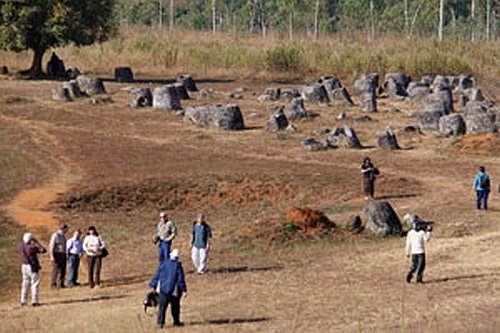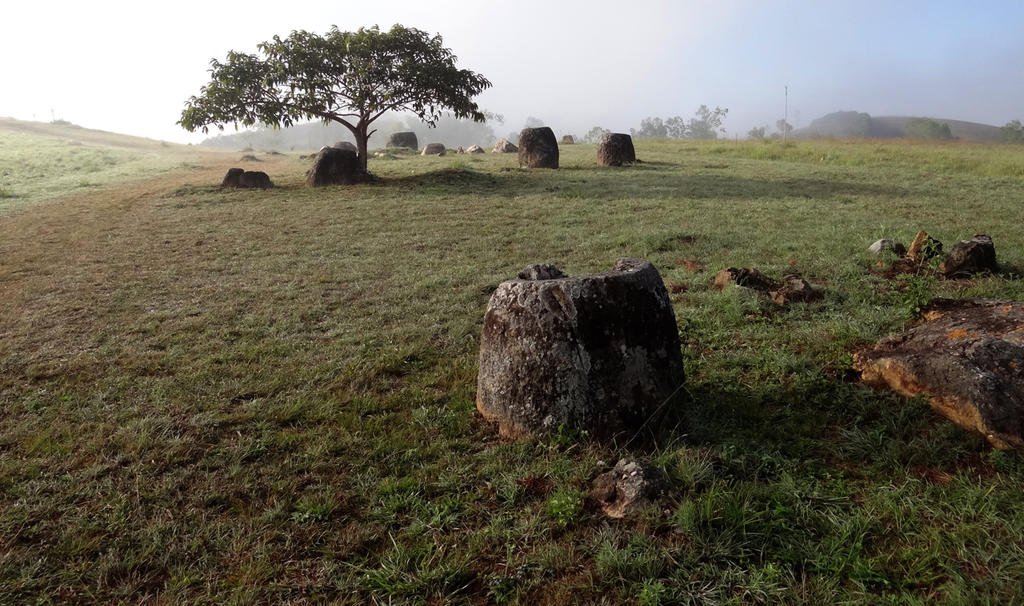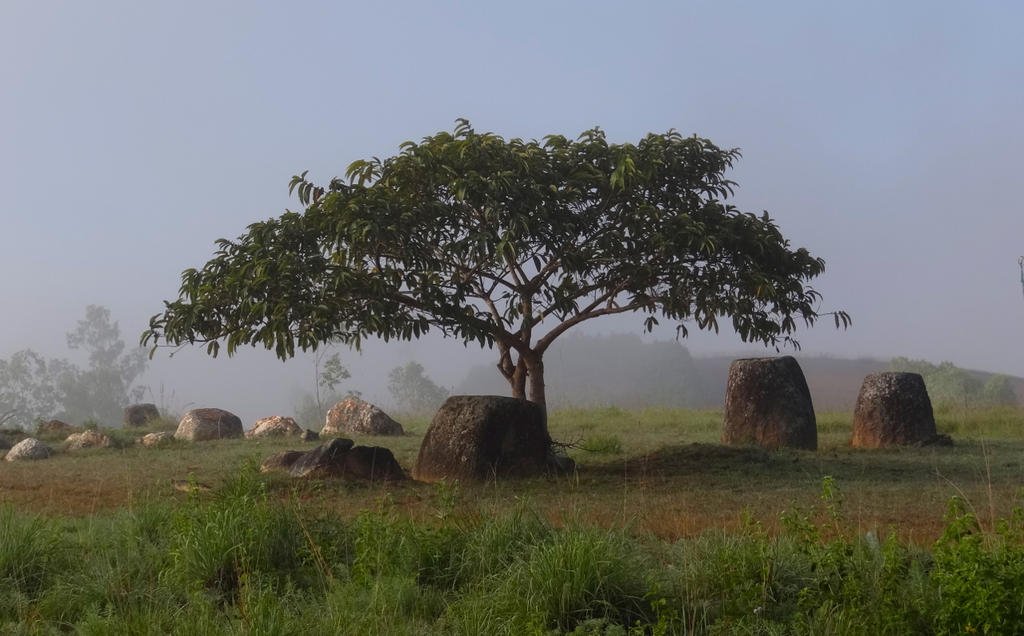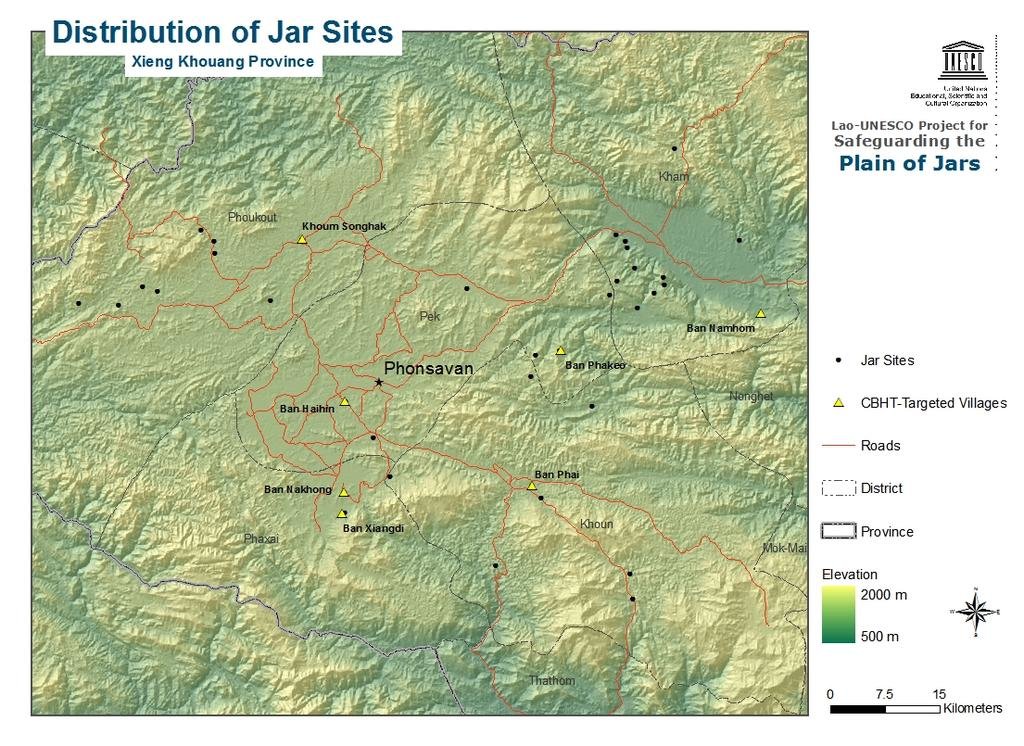Lone Rider
Blokes Who Can
Talks underway on Plain of Jars future
Experts from the UN Educational, Scientific and Cultural Organisation (UNESCO) met with government representatives yesterday in Xieng Khuang province to discuss the conditions required for the centuries-old Plain of Jars to become a World Heritage Site. The Plain of Jars is one of the tourist sites that attracts many visitors to Xieng Khuang province. The two-day meeting, sponsored by the Australian National Commission for UNESCO, recognised that Laos needs to establish a master plan for the development and management of the site, according to a local source. The source said the meeting was told that more studies were needed to be carried out at the Plain of Jars, particularly on its history, archeology and cultural importance, as well as a deeper look at the surrounding environment and nature-related issues. The meeting was chaired by Xieng Khuang provincial Deputy Governor, Mr Khampien Sinuanthong, and attended by more than 30 participants including about 10 from UNESCO and the Australian Embassy to Laos. The Ministry of Information, Culture and Tourism's Heritage Department Deputy Director General, Mr Viengkeo Souksavatdy, told the Vientiane Times previously that the meeting was important to prioritise what need to be carried out further so Laos could work on before submitting a formal proposal for its world heritage status.

The Plain of Jars is a megalithic archaeological landscape thought to date back 2,500 to 3,000 years. It contains more than 2,000 stone jars, the biggest of which is more than 3m high with a circumference of 8m. Scattered throughout the Xieng Khuang plateau, the stone jars appear in clusters, ranging from a single or a few to several hundred jars in the lower foothills surrounding the central plain and upland valleys.
Mr Viengkeo said several parties had expressed their intention to support Laos in listing the Plain of Jars as a World Heritage Site, including Australia and France. The Plain of Jars would be the third Lao entry on the UNESCO list, alongside the Luang Prabang townsite and Vat Phou in Champassak province. Mr Viengkeo reiterated the importance of working out a proper master plan for the site in order to make sure it ties in with the province's socio-economic development plan. In a report issued last year, the Global Heritage Fund named the Plain of Jars as one of the top 10 endangered historical sites in Asia. These sites were described as having the potential for “irreparable loss and destruction” in the face of economic expansion, large visitor numbers, poor technical resources and looting. Mr Viengkeo admitted development in Xieng Khuang province could pose a threat to the Plain of Jars if the province's socio-economic plan was not undertaken carefully and correctly.
By Times Reporters (Latest Update July 2, 2013) - Source: Vientiane Times
Experts from the UN Educational, Scientific and Cultural Organisation (UNESCO) met with government representatives yesterday in Xieng Khuang province to discuss the conditions required for the centuries-old Plain of Jars to become a World Heritage Site. The Plain of Jars is one of the tourist sites that attracts many visitors to Xieng Khuang province. The two-day meeting, sponsored by the Australian National Commission for UNESCO, recognised that Laos needs to establish a master plan for the development and management of the site, according to a local source. The source said the meeting was told that more studies were needed to be carried out at the Plain of Jars, particularly on its history, archeology and cultural importance, as well as a deeper look at the surrounding environment and nature-related issues. The meeting was chaired by Xieng Khuang provincial Deputy Governor, Mr Khampien Sinuanthong, and attended by more than 30 participants including about 10 from UNESCO and the Australian Embassy to Laos. The Ministry of Information, Culture and Tourism's Heritage Department Deputy Director General, Mr Viengkeo Souksavatdy, told the Vientiane Times previously that the meeting was important to prioritise what need to be carried out further so Laos could work on before submitting a formal proposal for its world heritage status.

The Plain of Jars is a megalithic archaeological landscape thought to date back 2,500 to 3,000 years. It contains more than 2,000 stone jars, the biggest of which is more than 3m high with a circumference of 8m. Scattered throughout the Xieng Khuang plateau, the stone jars appear in clusters, ranging from a single or a few to several hundred jars in the lower foothills surrounding the central plain and upland valleys.
Mr Viengkeo said several parties had expressed their intention to support Laos in listing the Plain of Jars as a World Heritage Site, including Australia and France. The Plain of Jars would be the third Lao entry on the UNESCO list, alongside the Luang Prabang townsite and Vat Phou in Champassak province. Mr Viengkeo reiterated the importance of working out a proper master plan for the site in order to make sure it ties in with the province's socio-economic development plan. In a report issued last year, the Global Heritage Fund named the Plain of Jars as one of the top 10 endangered historical sites in Asia. These sites were described as having the potential for “irreparable loss and destruction” in the face of economic expansion, large visitor numbers, poor technical resources and looting. Mr Viengkeo admitted development in Xieng Khuang province could pose a threat to the Plain of Jars if the province's socio-economic plan was not undertaken carefully and correctly.
By Times Reporters (Latest Update July 2, 2013) - Source: Vientiane Times


















